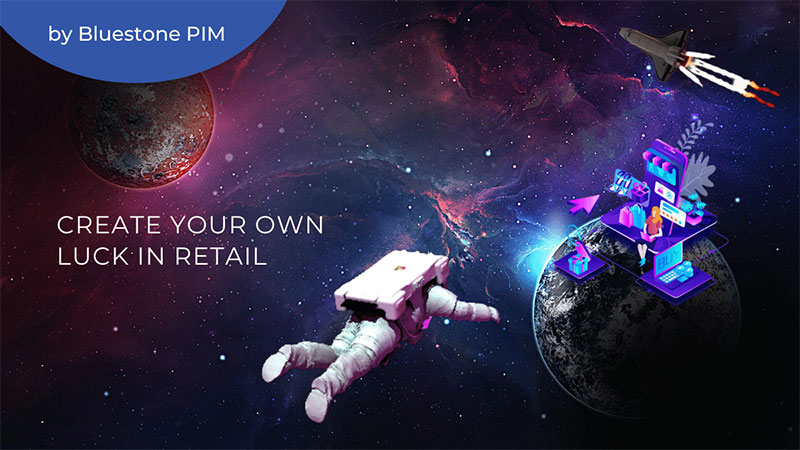For many years now, businesses have struggled with digitalization, trying to react to market demands with little planning or strategy.
But it is possible to do digital transformation the proper way, and you can prepare for the future of sales without disrupting your business.
The answer comes with digital twins.
In this article, we will explore the concept of digital twins, its benefits, and how eCommerce and retail businesses can use it to accelerate their sales and growth.
What is a digital twin?
In a nutshell, a digital twin is the virtual representation of a physical product, including all its components, attributes, and features, and is used to simulate their behavior in a digital environment. They have applications in several industries, like manufacturing, construction, and scientific research.
Businesses can showcase their products in a way that goes beyond traditional product descriptions and images, providing customers with a more engaging and memorable shopping experience.
To create an accurate and effective digital twin, businesses must provide as much product information as possible to ensure that the digital twin reflects the product's physical characteristics and functions.
Businesses can use a digital twin for various purposes, such as product design, testing, and customer engagement.
How digital twins help you sell your products
A growing number of transactions occur without the desire or need for human interaction.
This is a challenge because products don’t sell themselves. But with good digital twins — it’s as close as it gets.
You can create powerful digital twins of your products that will be able to answer any question like informed salespeople, keep track of user reviews, and persuade even the toughest of customers.
Well-implemented digital twins become tireless selling machines that work for you when you sleep.
Think of it as having an army of robots that will help you drive your online sales by giving you fast access to new opportunities (like new sales channels).
It’s an exciting perspective, but let’s step back a bit and see what digital twins are actually made up of.
Product information: the main component of a digital twin
Digital twins are the entire product content, including photos, descriptions, and specs, but also, so much more.
They are the best possible representations of your products, designed to play to the strengths of your business and further develop your competitive advantage.
There is no perfect digital twin, and what works is different for every company. For some businesses, a twin that only knows its name and price is enough.
For others, it is necessary to create a full-blown digital twin—a complete picture of specifications, third-party logistics, product experience, VR objects, and so on.
Have a look at the table below for an example of what product information can compose a digital twin.
| Information Types | Information Sources | |||||
|---|---|---|---|---|---|---|
Producer |
Distributor |
Customers |
Partners |
Internal Service |
External service |
|
|
Specifications |
||||||
|
Media |
||||||
|
Instructional |
||||||
|
Logistics |
||||||
|
Structure |
||||||
|
Product experience |
||||||
|
Health and Safety |
||||||
|
Internal references |
||||||
|
External references |
||||||
|
Internal triggers |
||||||
|
External triggers |
||||||
Why is product information important in creating a digital twin?
Creating a digital twin involves gathering as much product information as possible, which then can be used to provide customers with a comprehensive understanding of the product they are considering buying.
However, the prospect of collecting and working with so much information can be daunting.
In fact, you may be asking yourself "why do I need to collect as much product information as possible? Just what is the deal?"
As it turns out, not only is product information indispensable when creating a digital twin, it serves a few additional purposes as well.
1. It answers consumer questions
Customers are more likely to convert to a product page that answers the right questions.
Answering questions has even more benefits: if you consistently produce quality answers, there’s a good chance they’ll land in Google’s answer box.
This will make visitors more likely to see your product page in the first place. No ‘black hat’ SEO tricks are needed — you can dominate search just by writing quality answers in plain language.
2. It serves an advisory function
Customers don’t always know exactly what they want.
When you help them make the right choice, it’s a win-win.
Relevant advice and recommendations are the very cornerstones of great customer experience.
That’s why no product page is complete without them.
3. It provides easy-to-find instructions
Providing easy-to-find instructions is crucial in meeting the expectations of your customers and building trust in your brand.
Having clear and concise instructions readily accessible can help convince your customers that there’s adequate support around your product and make them feel more feel confident in their purchase.
Also, while it's easy to rely on the manufacturer's manual to provide the information your customers want or are looking for, they may not always address specific concerns or issues that customers may encounter.
Therefore, it's important to also consider other sources of information, such as customer reviews, to identify areas where customers may be struggling.
By creating an unofficial guide, you can provide additional support to your customers and demonstrate your commitment to their satisfaction, while staying one step ahead of competitors who do not do the same.
Don’t be limited to manufacturer’s manuals. Look to customer reviews to see what issues people are struggling with, and consider putting together an unofficial guide.
Interesting read: Inside the world of Instruction Manuals by BBC Future
4. You can keep track of changes
It also pays to keep track of changes in your product information for historical purposes.
Once you’ve carried out a campaign, you know what worked and what didn’t, and you can use this knowledge to better prepare for future campaigns and improve their overall effectiveness.
Historical versions of product content, including descriptions and media, can also be a valuable asset in saving time and effort for future campaigns.
By maintaining a database of past content, businesses can easily repurpose or modify existing materials for future campaigns, rather than starting from scratch each time.
It's important to note that effective tracking and analysis of product information and campaigns require the use of a Product Information Management (PIM) system.
A PIM system provides a centralized platform for managing and organizing all product information and can help streamline the process of tracking and analyzing historical data.
So, experiment, check results, rinse, and repeat.
5. You can make sales or marketing predictions
To be successful in the ever-changing world of retail, businesses must be aware of external factors that can affect their sales or marketing activities.
Weather conditions, changing stock levels, and upcoming fashion weeks can all affect the way you market or sell your products.
Like in the classic example of selling umbrellas in the rain, it’s all about keeping your eyes open to the world around you, quickly responding to change, and staying ahead of the competition.
Decide which information can be relevant, record it and use it to make informed predictions of future sales trends and adjust your strategy accordingly.
If you’re determined to get a head start on your competition, you have to do things differently than the rest. This means you’re not afraid to build your own map.
6. You can delight your customers
Product content can be used to create an engaging product story for customers by providing clear and concise information about the product, its features, and benefits, and presenting them in a way that is easy to understand and appealing to the target audience.
This product content can then be used in conjunction with a digital twin to create an immersive product story.
Digital twin example: Wayfair and augmented reality
Digital Twin technology can be used to create an engaging and delightful shopping experience by providing a digital representation of your product that can be explored and interacted with in a unique and immersive way.
Look at what Wayfair Inc. did as an example.
Wayfair Inc. is an American eCommerce company based in Boston, Massachusetts that sells furniture and home goods online to homeowners around the country.
In 2018, Wayfair used Digital Twin technology to create "View in Room", an interior design and room planning app that invites consumers to explore professionally designed rooms and visualize products in their homes at scale through mixed reality.

Wayfair uses augmented reality to offer their customers a "try-before-you-buy" visual experience and let their customers "see" what the furniture looks like in their homes.
By using AR and 3D modeling technology, customers can see how furniture will look in their space, experiment with different styles and configurations, and make better buying decisions all from the comfort of their homes.
This creates a shopping experience far more engaging and immersive than a traditional product detail page with just a product description and a few images.
Benefits of a digital twin for retail
As you see above, the main reason for investing in good product content (and digital twins) is to build your competitive advantage.
Digital twins are uniquely positioned to help you stand out from your competition.
The superpowers they bring to the table include:
- 360° product vision: You can ask digital twins about anything, from photos and descriptions to ratings & reviews. They know their dimensions and properties, even shipping weight, and where to find them in the warehouse.
- Enhanced senses: No matter who you are, digital twins can read you like an open book. Just when you think your cart is good to go, they come up with product recommendations you’ll love.
- Supersonic speed: When a sales opportunity arises, digital twins are ever ready. They enter new markets fast, giving you more time to sell your products before others even pick up on the idea.
Once you develop comprehensive, versatile descriptions for your products, you can handle your existing sales better — all without disrupting your current business.
But the main reward? You’re ready to welcome new opportunities that will define your future business.
How to get ready for new sales channels with digital twins
The only true constant in business is change.
New opportunities can and do emerge overnight, and only the resourceful few who see them first will get any benefits.
Your main sales channel will not sustain forever, and in order to stand resilient, you need to understand that at any point in time, it can close down or lose customers to a more attractive competitor.
It used to be easy to coast for a long time after a few remarkable successes. (…) It’s too easy to decide to sit out the next round, rationalizing that you’re spending the time and energy to build on what you’ve got instead of investing in the future.
Seth Godin, author of ‘Purple Cow: Transform Your Business by Being Remarkable’
As Amazon is gaining a strong foothold in Europe and Asia, the global economy is in fear of the so-called “Amazon effect“. There are two ways e-commerce businesses can prepare for this challenge:
- Embrace the new channel. With digital twins that are trained to sell well on the Amazon marketplace, Amazon becomes a powerful opportunity to reach more customers with your products.
- Don’t betray your own eCommerce store — instead, focus on excelling at “what Amazon can’t do” (#WACD).
This includes providing a truly personalized experience that goes beyond personalized recommendations.
Digital twins of your products can achieve it by adjusting the way they present themselves to each customer.
Once you create a product experience that Amazon can’t beat, the threat is gone.
Of course, achieving this is a challenge in itself, sometimes too high for eCommerce teams.
What can help is using machine learning to your advantage. Whatever patterns human thinking can’t detect quickly or efficiently, smart ML processes may.
Major retailers are increasingly turning their eCommerce stores into marketplaces. For example, H&M announced plans to begin selling external brands through its e-commerce platform.
In a case like this, the external brands have to deliver product content that can be easily processed for sales. Those who have it ready are at an advantage, and they are more likely to get the deal, and they’ll be the first to start selling.

DOWNLOAD FREE E-BOOK
The no. 1 feature that drives purchases is product content
Check if you need a PIM system to manage your product content effectively.
A transparent digital content strategy also makes your business more attractive to investors.
This may seem irrelevant if you’ve built your company without thoughts of selling it. But when there’s an opportunity to do it at a high profit, it is hard to say “no”. Investors are looking for a mass of proof that yours is more than a good idea.
Having digital twins that can sell your products in any sales channel displays a competitive edge over other businesses in your niche.
Just look at how many online businesses Walmart acquired in the past 3 years.
Behind the face value of each acquisition stands the cost of integrating all the incoming product data. For businesses big and small, finding a way to make these processes as smooth as possible becomes an urgent necessity.
Channel readiness is a crucial factor that determines your capacity for growth. In order to grow your business unrestricted, start with creating accurate digital representations of your products. #digitaltwins #digitaltwinsforcommerce Click To TweetCreate digital twins with Bluestone PIM
If you want to capitalize on the unique advantage that comes with digital twins, you need help from the right technology.
As you can imagine, spreadsheets weren’t built for this task.
Even dedicated Product Information Management (PIM) systems aren’t necessarily able to handle it, for reasons such as limited DAM (Digital Asset Management) capability or a limited number of available attributes.
The right PIM solution will enable you to:
- establish a single source of truth for all your product data
- create complex, multifaceted relations between products
- manage unlimited attributes to address the case of every sale
- meet the demands of today’s busy customers with personalized content
- engage customers across all sales channels, both online and offline
- easily expand your business to new markets
Bluestone PIM handles all that and much more.
At some point, you have to do it the proper way: put product information at the center and create good digital representations of your products that help you sell well, no matter the channel or setting. The good news is, you can do this without disrupting your existing business. You can build great product content that makes up your products’ digital twins, and prepare for the future in parallel with what you have today. The PIM investment will bring benefits to your existing business, so there is every reason to do this now.
Jon Anders Aas-Haug, Founder of Bluestone PIM
Product information is the cornerstone of customer-centricity and a successful digital twin strategy. By implementing a Product Information Management solution, you can focus on creating a compelling and engaging shopping experience for your customers with speed and efficiency, and eliminate the frustration of manually managing an inventory catalog with over 1000+ SKUs.
Contact our advisors to learn more about PIM and how it can elevate your retail sales strategy with digital twins. Or book a demo for a free guided product tour of Bluestone PIM.
Editor’s note: This post was originally published in November 2019 and has been updated with the latest information.
Tags
E-commerce Tips conversion Product Information digital transformation digital twin product contentYou might also like

The Ultimate Cheat Sheet on Omnichannel

How to Increase Retail Sales with PIM



